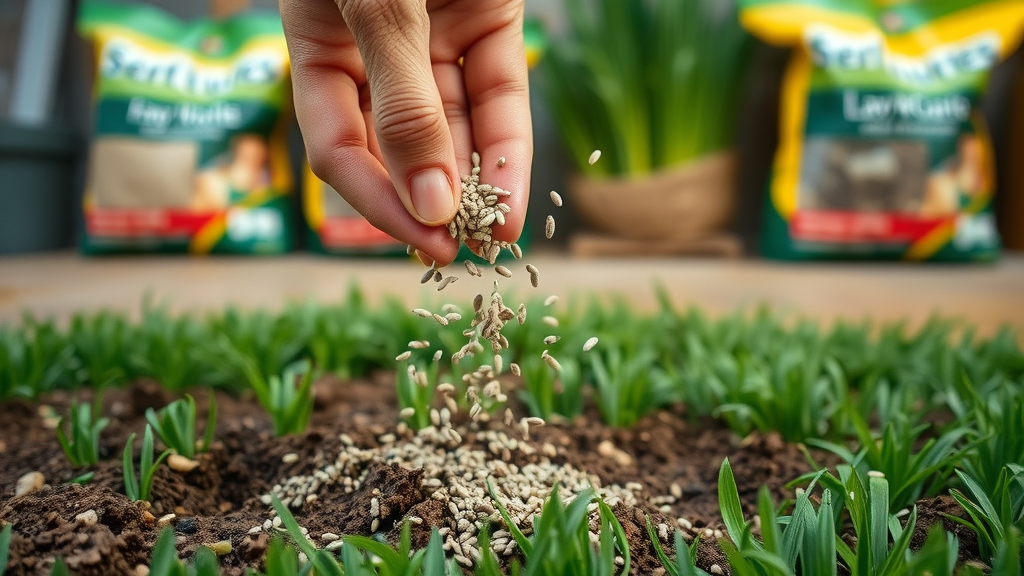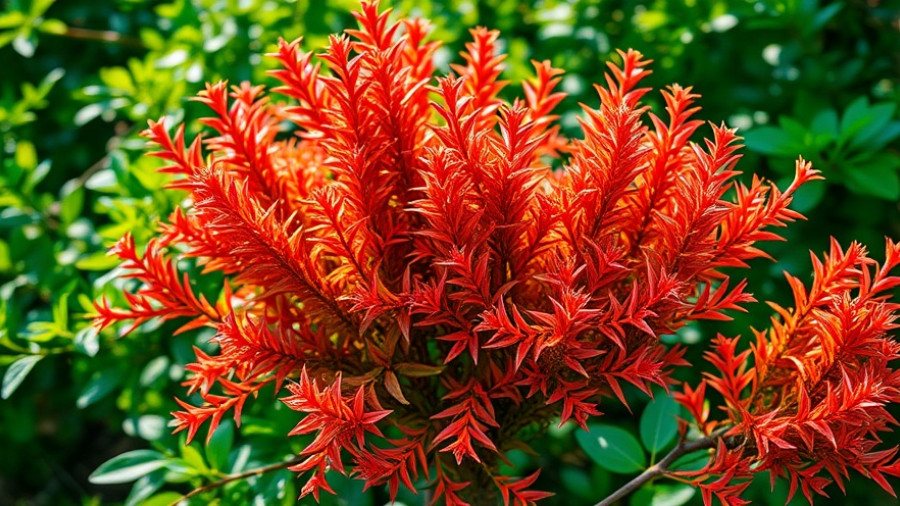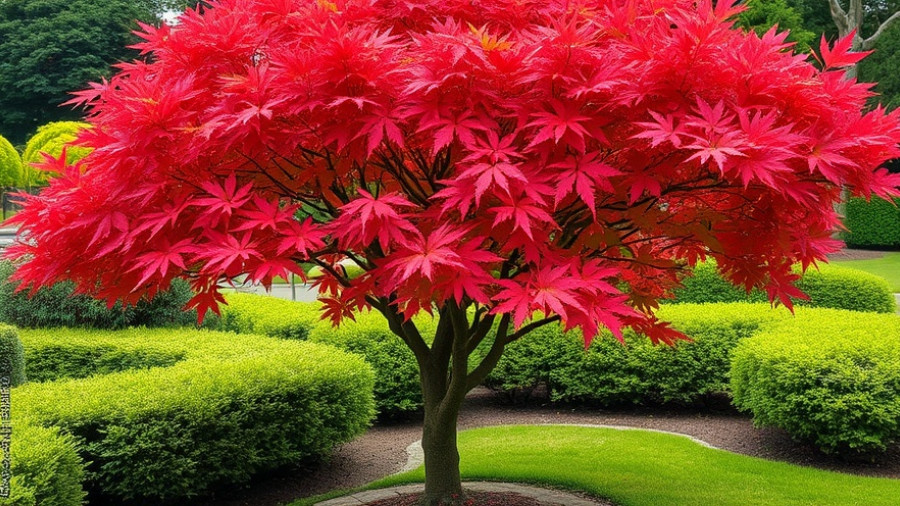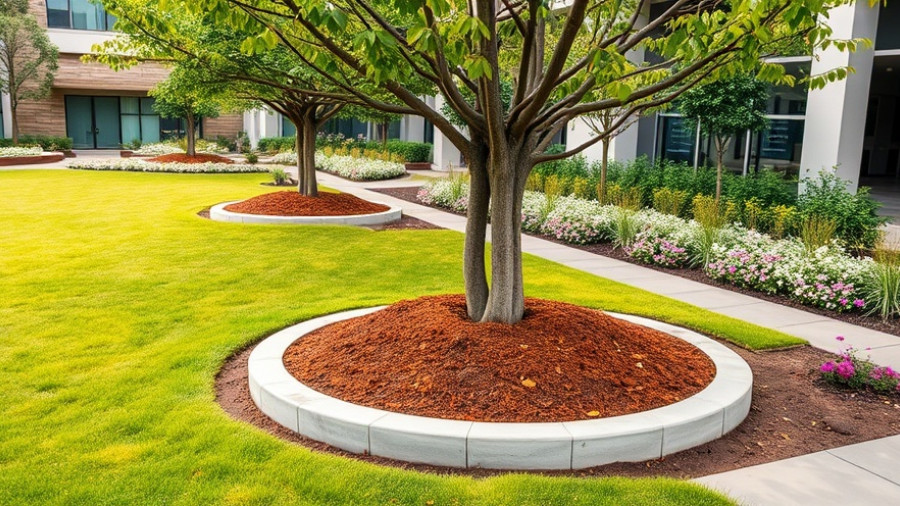Did you know that neglecting simple lawn care steps leaves 67% of lawns at risk for disease and decline? It’s easier than you think to revive your yard and protect your home’s greenest asset. Whether you want to enhance curb appeal or finally enjoy a lush carpet of grass, this guide equips you with science-backed strategies to take action today . Unlock insider secrets, preventive measures, and practical, cost-effective tips to save your lawn now. Don’t wait for the next patch of brown—follow these proven essentials for a yard you can be proud of all year round.
Did You Know 67% of Lawns Suffer Due to Poor Lawn Care? Start Saving Your Yard Now
Far too many homeowners underestimate the power of consistent, quality lawn care . Statistics show that up to 67% of lawns experience stress, thinning, and disease simply because basic maintenance is ignored or done incorrectly. The result isn’t just patchy grass—it’s increased vulnerability to lawn disease , wasted seed, rising costs, and cascading curb appeal issues. Fortunately, you don’t have to be among that troubling majority. By understanding lawn care fundamentals and taking simple, actionable steps, you can nourish your soil, support a robust root system , and defend against common threats.
Start with the essentials: routine mowing (always using the 1/3 rule ), timely fertilization , and thorough soil testing . Address problems early using science-backed treatments for diseases and choose high-quality grass seed suited for your soil type and climate. Whether you opt for a lawn care service or take the DIY path, proactive maintenance is your most powerful defense against costly, recurring issues. The turf beneath your feet is more than grass—it’s an investment in your home’s health and value. Let’s dive into the most effective strategies to protect it.

- The most effective, science-backed strategies for immediate lawn improvement
- How to diagnose and treat common lawn diseases
- Proven methods for choosing and planting grass seed
- Insider tips from trusted lawn care services
- Answers to the top questions homeowners ask about lawn maintenance
"Proper lawn care isn’t just for curb appeal—it safeguards the health of your entire yard."
| Service Level | What’s Included | Average Cost | Best For |
|---|---|---|---|
| DIY Lawn Care | Mowing, watering, basic fertilizing | $20-$80/month | Homeowners with time + knowledge |
| Professional Lawn Care Service | Soil testing, seeding, disease treatment, ongoing plans | $75-$500/month | Busy homeowners, complex issues |
Lawn Care Fundamentals: Building a Healthier Lawn From the Soil Up
At the heart of every healthy lawn is a thriving community of soil microbes and organic matter, supported by correct lawn care routines. Before you dream of luscious grass, focus on the ground beneath. Conducting a soil test reveals vital pH, nutrient, and texture information—empowering you to properly amend, fertilize, and seed your lawn area . Homeowners often apply fertilizer or water blindly, but without knowing your soil type (loam, clay, sandy soil ), you risk wasting resources and inviting problems.
Understanding soil testing is crucial to identify nutrient deficiencies and adjust practices accordingly. If your lawn’s foundation is weak, even the best grass seed and routine mowing won’t help. Use the insights from a soil test kit for targeted amendments, such as lime applications for acidic soil or compost to enrich organic material . With the right base, your lawn can resist disease, drought, and foot traffic, resulting in thicker, greener turf that thrives across every growing season .
For those looking to maximize their lawn’s resilience during the hottest months, it’s worth exploring essential summer lawn care tips that address watering, mowing, and seasonal challenges. These strategies can help you maintain a vibrant yard even when temperatures soar.
Essential Lawn Care Steps for Immediate Results
- Soil testing and amending
- Timely mowing with the 1/3 rule
- Proper watering
- Seasonal fertilization
Start with a soil test to uncover hidden issues and make adjustments using organic matter or essential nutrients. Adhering to the 1/3 rule protects your grass during each single mow , preventing unnecessary stress and promoting thicker growth. Adjust your mowing height based on seasonal needs; lower cuts in spring and autumn, but slightly higher in summer to conserve moisture. Water your lawn deeply but less often—aim for 1 to 1.5 inches per week—including rainfall. Scheduled fertilization optimizes growth and repairs bare patches, especially if you’re reseeding areas after summer stress or a late fall cleanup.
It’s best to use sharp mower blades to create clean cuts and prevent damage that can lead to disease, and always remove excessive thatch accumulation to avoid suffocating roots. By mastering these fundamental steps and applying them consistently, you’ll see dramatic improvements across your entire lawn quickly.

Selecting the Right Grass Seed for Optimal Lawn Care
- Kentucky bluegrass
- Perennial ryegrass
- Tall fescue
Selecting a suitable grass seed is essential to long-term lawn care success. Kentucky bluegrass is prized for its dense, lush texture and cold hardiness, making it perfect for northern lawns. Perennial ryegrass germinates quickly and is often included in mixes to establish coverage after heavy use or renovation. Meanwhile, tall fescue is an outstanding performer in transition zones and southern areas due to its deep root system and drought resistance.
Matching grass seed to your climate and soil type is critical. Choose seed blends tailored for shade or high sun exposure as needed and always look for varieties bred for disease tolerance. When planting, prepare your lawn area thoroughly—remove debris, loosen compacted soil, and add organic matter such as compost or peat moss. Lightly rake and press seed into the surface for consistent contact. Keep the soil evenly moist during germination, but don’t oversaturate, especially in sandy soils where drainage is fast.

For best results, overseed in early autumn or late fall —this allows seedlings to establish strong roots before the next growing season. Always buy fresh seed for improved germination, and consider consulting your local state university extension office for region-specific guidance on varieties.
Expert Guide to Preventing and Managing Lawn Disease for Pristine Lawn Care
Even the most loved lawns can fall prey to persistent lawn diseases , especially when maintenance routines are inconsistent or environmental stress strikes. Learning to recognize early warning signs and implementing proactive management practices is vital for keeping your yard healthy. Understanding the causes—such as poor drainage, compacted soil, or incorrect fertilization—lets you tailor a targeted response and halt the spread of illness before it devastates your entire yard.
Regular inspection for unusual discoloration, patchy growth, or fuzzy coatings enables quick action. Pair this vigilance with recommended yard hygiene, good air circulation, and proper weed control to minimize disease outbreaks. If persistent problems arise, consider a professional lawn care service that offers expert analysis and precision treatment, ensuring your lawn bounces back stronger each season.
Recognizing and Treating Common Lawn Diseases
- Brown patch
- Dollar spot
- Red thread
Several lawn diseases can strike without warning, but vigilant observation makes a difference. Brown patch manifests as irregular, brown or tan lesions rapidly spreading during warm, humid conditions. Dollar spot appears as small, silver-dollar-sized straw patches, often caused by nutrient deficiency or morning dew. Then there’s red thread , a reddish-pink fungus that’s common in cool, wet weather and frequently targets fine fescues or ryegrass.
Tackle these diseases with a multipronged approach: first, remove and bag clippings from affected areas to prevent further spread. Adjust your cultural practices—avoid overwatering and watering late in the day, which can prolong leaf wetness. For persistent infections, choose fungicides labeled for your specific issue, but prioritize integrated disease management based on expert recommendations. A prompt, science-backed response protects both your lawn and your investment.
Proactive Lawn Care Strategies to Ward Off Lawn Diseases
- Adjusting watering schedules
- Boosting air circulation
- Seasonal overseeding
Prevention is the best cure for lawn disease . Modify your watering schedules to deliver moisture early in the morning—this allows leaves to dry during the day and reduces the ideal habitat for pathogens. Regularly overseed your entire lawn with hardy, disease-resistant grass seed each fall or as needed, especially after bare patches, to fill in weak spots and outcompete weeds or fungi.
Enhancing air circulation is also key: prune trees and shrubs that cast persistent shade, and dethatch regularly to break up the thatch layer, which can harbor disease organisms. Aerate your soil to improve airflow at the root zone and help water penetrate more deeply, supporting a stronger, more resilient lawn. Consistently tracking conditions—temperature, humidity, and active growth—lets you time preventive steps for maximum effectiveness.
Boosting Results: When to Use a Lawn Care Service vs. DIY
Deciding whether to hire a lawn care service or tackle maintenance on your own depends on your needs, budget, and available time. Both approaches have their merits—some tasks like expert soil analysis or complex lawn diseases are best left to pros, while regular mowing and seasonal fertilizing can be easily handled by diligent homeowners. Assess your lawn area’s unique challenges, and don’t hesitate to ask for a professional diagnosis when persistent problems arise.
Some homeowners prefer the control and cost savings of DIY care, while others want the peace of mind afforded by a comprehensive, scheduled care service . Either way, knowing your options ensures your yard receives effective, timely management throughout each time of year .
Advantages of Professional Lawn Care Service
- Deep lawn analysis
- Disease diagnosis and treatment
- Scheduled, consistent maintenance
Engaging a professional lawn care service offers several advantages, especially for complex lawns or homeowners with limited time. These services conduct thorough soil analysis, identifying pH imbalances and nutrient gaps that impact growth. With advanced diagnostic tools and expertise, they quickly spot and treat lawn diseases , applying targeted solutions that deliver results while reducing the risk of pesticide misuse.
Another major benefit is the convenience and regularity of scheduled maintenance—professional teams keep your lawn on an optimized care calendar, improving your curb appeal and long-term value. If you’re busy, own a large property, or simply want the best for your yard, a reputable lawn care service can save you time, money, and frustration.
Cost-Effective DIY Lawn Care Tips
- Bulk-buying fertilizer
- Sharpening mower blades
- Starting with local, hardy grass seed
For those who enjoy hands-on work, DIY lawn care can be satisfying and economical with the right strategy. Start by sourcing supplies in bulk—fertilizer, grass seed, and soil amendments—especially during pre-season sales or from local garden centers. Keeping your mower blades sharp ensures even cuts, reduces plant stress, and minimizes vulnerability to lawn disease . Choose hardy, climate-appropriate grass seed available from trusted regional suppliers or state university extension offices —these blends are bred for local pests, temperatures, and rainfall patterns.

Be proactive with regular soil testing and aeration—these low-cost, high-impact tasks make a big difference. Use home remedies for minor weeds or pest problems to save money, and focus on consistency each week to prevent expensive fixes later. With a bit of planning and dedication, DIY lawn care empowers you to build a healthy, sustainable yard that stands out in your neighborhood.
Seasonal Guide: Aligning Lawn Care With Each Time of Year
Effective lawn care is a year-round effort, with distinct tasks required as the seasons change. By adapting your approach to each time of year , you prevent stress, manage thatch accumulation , and nurture your entire lawn for resilience. Follow these tailored checklists to align your routine with nature’s calendar.
Recognizing seasonal needs and responding proactively ensures your yard never enters dormancy unprepared or faces weather extremes unprotected. Whether you’re adding organic matter, choosing new grass seed, or planning core aeration, timing—and consistency—are essential for success.
Spring Lawn Care Checklist
- Core aeration
- Soil testing and adjustment
- Overseeding bare spots
Spring is the jumping-off point for lush growth. Begin by aerating compacted areas to improve water and nutrient infiltration, especially if there’s notable thatch accumulation . Next, conduct a thorough soil test to identify imbalances—correct with lime, sulfur, or compost as needed. Overseed thin or bare spots with a high-quality blend selected for your region. Spring is also ideal for applying pre-emergent weed control and setting mowing heights that encourage vigorous, dense turf. By prepping now, you give your lawn a competitive head start into summer.
Summer Lawn Care: Protection and Maintenance
- Regular mowing
- Deep watering
- Dethatching as needed
In summer, focus on keeping stress at bay. Raise your mowing height slightly to shade soil and reduce evaporation—a must during extended heat. Water deeply (but infrequently), early in the morning, encouraging roots to grow down and access moisture in deeper soil layers. Monitor closely for signs of disease and increase air circulation with occasional dethatching or wind-pruning overhanging branches. Avoid fertilizing during peak temperatures, which can cause burning, and always remove clippings from areas showing disease symptoms. Consistent summer care keeps your turf green and robust until the weather cools again.

Fall Lawn Care: Preparing for Dormant Months
- Leaf removal
- Last fertilization before winter
- Reseeding as required
Fall is the season to fortify your lawn against winter stress. Remove fallen leaves regularly to prevent smothering and the buildup of moisture-loving lawn disease . Apply a slow-release, high-potassium fertilizer to support root growth heading into dormancy; this is also the best time for late bare patch repair and overseeding. If your soil is sandy or compacted, apply organic matter or topdress with fine compost. The work you do now translates into stronger, greener grass next spring, so don’t delay these critical preparations.
People Also Ask: What is the 1/3 Rule for Lawns?
Understanding the 1/3 Rule for Proper Lawn Care
- The 1/3 rule ensures healthy grass growth by never removing more than one-third of the grass blade at once during mowing. This reduces stress and encourages robust growth.
The 1/3 rule is a foundational principle in professional lawn care : never cut more than one-third of the grass blade’s length in a single mow. Cutting more can shock your turf, weaken the root system, and expose the soil to heat or pests. This rule maintains lawn vigor, encourages deeper roots, and prevents unsightly scalping that can invite lawn diseases or weed encroachment. Keeping mowing heights consistent across the growing season results in denser, healthier grass that’s far easier to manage long term.

People Also Ask: What Does Lawn Care Consist Of?
Key Components of Comprehensive Lawn Care
- Lawn care consists of mowing, fertilizing, aerating, overseeding, pest/disease control, and ensuring correct watering practices.
Comprehensive lawn care covers far more than just mowing and watering. A healthy lawn requires consistent fertilizing on a seasonal schedule, aerating soil at least once a year, and overseeding to patch thin areas or enhance vigor. Implementing an effective pest and disease control plan is crucial, and adjusting care routines for climate—such as increasing watering during drought or applying lime on acidic sandy soils —makes all the difference. Each of these steps is interconnected, supporting the overall health of your lawn area and maximizing your yard’s beauty and resilience.
By investing a little time each week, you boost not just the curb appeal but also the long-term value of your property.
People Also Ask: What Maintenance Does a Lawn Need?
Daily, Weekly, and Seasonal Lawn Care Maintenance Tasks
- Maintenance includes routine mowing, watering, seasonal fertilizing, soil management, and regular monitoring for diseases or pests.
The most successful lawns rely on regular maintenance. On a weekly basis, perform mowing according to the 1/3 rule , and water deeply if conditions are dry. Each season, apply the appropriate fertilizer and check for soil compaction or thatch accumulation, aerating and dethatching as needed. Monitor for early signs of pests and lawn disease , especially during warm, humid conditions or after heavy rain.
Long-term success comes from tracking the unique needs of your lawn area —soil testing, adjusting treatments, and applying grass seed for bare patch repair during the best time of year . Regular attention prevents small problems from becoming costly repairs, streamlining your routine and guaranteeing a healthy, robust lawn year after year.
People Also Ask: How to Get Free Lawn Care?
Options and Resources for Free Lawn Care and Support
- Explore community programs, grants, local volunteer groups, and educational resources that offer free lawn care or support for homeowners in need.
If you’re in need of affordable solutions, several organizations and community programs can help. Many cities partner with non-profits or local Cooperative Extension offices to offer workshops, free soil test kits, or seasonal seed giveaways. Volunteer groups and veteran initiatives sometimes offer lawn care to those physically unable or financially strained. Reach out to your local university extension, state agencies, or neighborhood associations for resources tailored to your area—they often provide educational support, discounted services, or connect you with helpful volunteers. A little research can unlock free or reduced-cost care, ensuring every homeowner can enjoy their best yard.
Top Lawn Care Mistakes to Avoid for Greener Results
- Overwatering
- Scalping the grass
- Delaying disease treatment
- Using the wrong grass seed for your climate
It’s easy to make missteps when maintaining your yard, but a few common mistakes can sabotage your results. Overwatering creates soggy conditions that weaken roots and breed fungi. Scalping —mowing too low—damages crowns and reduces resilience, while waiting too long to treat visible disease allows it to spread rapidly. Finally, planting grass seed unsuited to your soil or climate wastes time and money.
To avoid these pitfalls, tune your care routine to your lawn’s needs: monitor and adjust watering practices, observe ideal mowing heights for your region, treat issues at the first sign of stress, and select high-quality, region-appropriate grass blends. These small changes make all the difference when striving for a resilient and beautiful lawn year-round.
Frequently Asked Questions About Lawn Care
-
How do I recognize lawn disease early?
Early signs include discolored patches, spots, fuzzy growth on blades, or unusual wilt. Check frequently during humid periods and address problems quickly to prevent escalation. -
What’s the fastest way to repair bare patches?
Remove debris, loosen the soil, amend with compost, and overseed with matching grass seed . Keep the spot moist and avoid foot traffic until new growth is established. -
Do all lawns need aeration annually?
Most lawns benefit from annual aeration, especially those with high traffic or clay soils. Aerating relieves compaction and improves root health, but some sandy soils may need it less often. -
Which lawn care products are safest for pets?
Choose organic fertilizers and pest controls with clear safety labels. Always follow manufacturer instructions and keep pets off treated areas until completely dry or as instructed.
Proven Lawn Care Tips for a Lush, Inviting Yard
"Consistency in lawn care practices leads to long-term results. Don’t skip the basics if you want a healthy yard."
The key to lasting lawn health is regular, mindful lawn care : adapt your schedule to changing seasons, blend good management practices with evidence-based science, and stay vigilant against disease and pests. Use quality products, consult local experts, and never underestimate the power of a well-timed mow or fertilization. Over time, these efforts reward you with lush, welcoming turf that serves as the pride of your home and community.
Take Action: Transform Your Lawn With Effective Lawn Care Now
Take action today—test your soil, adjust your mowing, and implement seasonal care routines. Your dream yard is one step away with smart, science-backed lawn care . Start now for healthier, greener results!
If you’re ready to elevate your yard’s appearance and resilience, consider how your lawn care efforts can complement broader home improvement strategies. For a deeper dive into seasonal maintenance and ways to boost your property’s safety and style, explore the benefits of combining smart lawn care with upgrades like summer lawn care routines and protective home features . Discover how a holistic approach can transform not just your grass, but your entire outdoor living experience—unlocking new levels of curb appeal and peace of mind.
To further enhance your lawn care knowledge, consider exploring the following resources:
- “5 Common Lawn Care Mistakes That Are Killing Your Yard” ( tomsguide.com )
This article highlights frequent errors homeowners make, such as mowing grass too short and overwatering, and provides guidance on healthier alternatives to maintain a vibrant lawn.
- “7 Affordable Lawn Care Tips For Gorgeous Grass That Will Save You Tons Of Green” ( gardeningknowhow.com )
Offering budget-friendly strategies, this piece emphasizes efficient mowing practices, proper watering techniques, and the benefits of leaving grass clippings to naturally fertilize your lawn.
By integrating these insights with the strategies outlined in this guide, you can achieve a lush, healthy lawn that enhances your home’s curb appeal.
 Add Row
Add Row  Add
Add 




Write A Comment